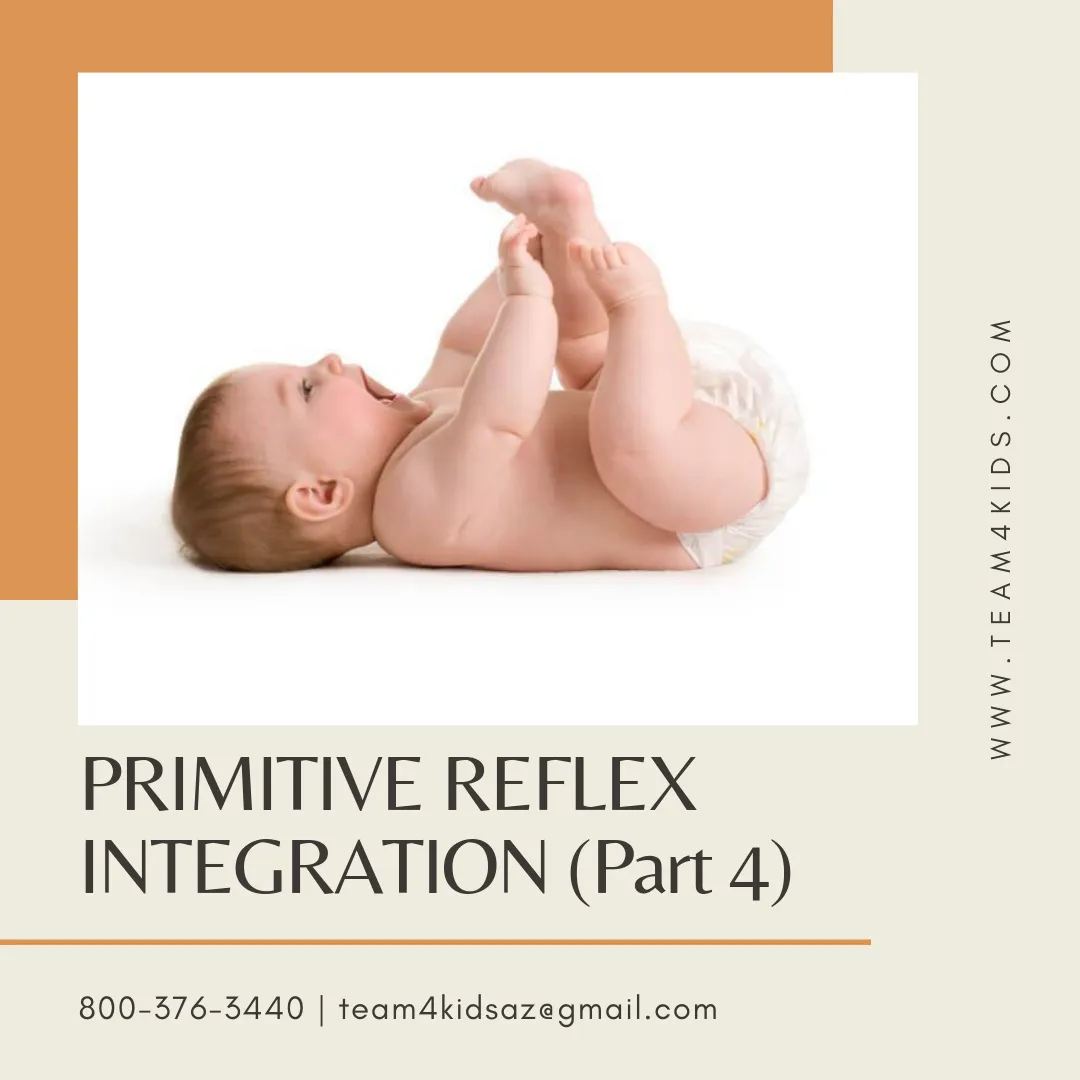If your child presents with three or more of the following symptoms, make an appointment for an occupational therapy evaluation:
Poor posture (stooping or arching of the body backwards)
Poor balance
Walks on toes
Motion sickness
Fear of heights
Weak muscle tone or Stiff muscle tone
Poor spatial awareness (stands too close to others or bumps into things)
Fatigues easily (Tires easily when standing for any length of time)
Avoids sports
Poor sequencing (telling stories, counting, alphabet)
Poor rhythm
Poor time management skills
Poor organizational skills
Poor depth perception (banging into things or knocking things over)
Poor near vision (reading and copying difficulty)
The above symptoms are indications of a retained Tonic Labyrinthine Reflex (TLR) primitive reflex.
What are Primitive Reflexes?
Primitive reflexes are automatic movements that begin to occur in utero. These reflexes are essential for survival and development. With typical development, the nervous system matures and naturally replaces the primitive reflexes (survival reflexes) with higher level postural reflexes (reflexes required for balance, coordination, and sensory motor development). Retained primitive reflexes can lead to developmental delays related to ADHD, sensory processing disorder, autism, and many other learning disabilities.
Tonic Labyrinthine Reflex (TLR)
The primitive reflex TLR is an automatic reaction of the arms, legs, and body caused by head movement. This reflex emerges in utero and is typically integrates by 3 ½ years of age. Retention of the TLR primitive reflex prevents the normal development of spatial orientation and the automatic reaction of the higher level head righting reflexes.
A retained TLR reflex is 1 of 6 primitive reflexes treated by the occupational therapy team at Team 4 Kids.
See links below for more information on Primitive Reflexes:
http://www.brain-sync.net/reflexes-2/tlr/

